Of multiple origins (Finland, Denmark, Russia) naturalizedFrench in 1927. The Russian years His father, Léopold Édouard Stürzwage, is acitizen of Villmanstrand (now Lappeenranta in Finland). Léopold Survage wasbaptized into the Protestant religion. In 1886 he lost his mother, and thefollowing year entered the Saint-Pierre et Saint-Paul school. On leaving highschool, he worked in his father's piano factory from 1897 to 1900, becoming anapprentice piano maker. Fascinated by drawing and painting from an early age,he entered the Moscow School of Fine Arts in 1899 with Constantin Korovine andLeonid Pasternak, and visited the Shchukin private collection: Manet, Gauguin,the Impressionists, Matisse and others. In 1903, he painted his first knownwork: Moscow, and took part in various exhibitions, including the “Stephanos”exhibition in 1907-1908 at the Stroganov School House and the “Valet deCarreau” exhibition in 1910-1911. Meanwhile, his father had gone bankrupt. Heliquidated his business and, with the little money he had left, moved to Parison July 12, 1908 with Hélène Moniuschko, whom he had married on January 20,1908 in Serguiev Possad. They separated in 1911 and divorced in 1918.The Paris School From Moscow, he knew the famousharpsichordist Wanda Landowska, who introduced him to the Pleyel company as apiano tuner[3]. He met up again with Archipenko, whom he had seen in Moscow,and attended courses at the Académie Matisse and the Académie Colarossi. Firstexhibitions from 1911 onwards, and in 1914 the principles of “colored rhythm”,by which an analogy is found between colored visual form and music, areestablished[4]. Introduced by Guillaume Apollinaire to the circle of Baroness Hélèned'Oettingen, with whom he had a love affair until the end of the First WorldWar[5], and Serge Férat in 1911, he met André Salmon, Picasso, Gino Severini,Robert and Sonia Delaunay, etc. His autograph can be found on the book of thesame name. His autograph appears on one of the sheets signed by guests at thememorable banquet given in Apollinaire's honor on December 31, 1916, at theAncien Palais d'Orléans on Avenue du Maine[6].At the Salon des Indépendants in 1914, he showed coloredrhythms, which he wanted to realize in film, anticipating the research intoabstract cinema that would be brought to fruition by Viking Eggeling and HansRichter[7]. Apollinaire extolled “Le Rythme coloré” in Les Soirées de Paris in1914. In 1915, Survage moved to Saint-Jean Cap Ferrat with the Baroness ofOettingen, and remained on the Côte d'Azur until the end of the war. Here hemet his future wife, Germaine Meyer, sister of pianist Marcelle Meyer and apianist herself[8]. In a letter to Léopold Zborowski dated December 31, 1918,Modigliani wrote: “Je fais la bombe avec Survage au Coq d'Or... The champagneis flowing”. Apollinaire organized Survage's first French exhibition at GalerieBongard in 1917, featuring thirty-two of his paintings. In 1920, Survageregistered the statutes of the “Section d'Or”, of which he was founder withAlbert Gleizes and Archipenko, Braque. Serge Férat, Fernand Léger and LouisMarcoussis were on the board. The association organizes exhibitions in Franceand abroad. In 1921, he took part in the exhibition “Les Maîtres du cubisme” atthe Galerie de L'Effort moderne. Albert Gleizes reproduces a work in his bookDu cubisme et des moyens de le comprendre. He marries Germaine Meyer on July 7,1921. In 1922, he exhibitedwith Léonce Rosenberg and took part in the first Section d'Or exhibition inItaly, followed by a group show at Galerie Weill with Henri Hayden, AugusteHerbin, Irène Lagut, Jean Metzinger and Severini. From 1922 onwards, Survage worked for Serge de Diaghilev'sBallets Russes, designing sets and costumes for Igor Stravinsky's opera bouffe,Mavra, to a libretto by Boris Kochno based on a tale by Pushkin. He alsodesigned a set for L'École des femmes at the request of Louis Jouvet, butwithout success. In 1927, Samuel Putnam's article on Survage in the ChicagoEvening Post preceded a one-man show in Chicago at the Chester JohnsonGalleries. From then on, he pursued an international career, holding numerous soloand group exhibitions in France and abroad. He produced fabric designs forChanel and religious compositions such as the crucifixion for Turku Cathedralin Finland in 1930. In 1937, he produced a series of monumental panels for thePalais des chemins de fer at the Exposition des Arts et Techniques in Paris:Liaisons postales et télécommunications, L'Optique-Horlogerie, La Précisionmécanique. These canvases, measuring 15.5 meters by 4 meters, were awarded thegold medal.He devoted himself to monumental painting in the1950s-1960s: a fresco on the theme of Peace at the Palais des Congrès in Liège,which led him to spend eighteen months in Belgium in 1958, designed Le Coq etle Cheval cartoons for the Manufacture des Gobelins and illustrated literaryworks. He was made an Officer of the Legion of Honor on March 12,1963. He died of illness in 1968[9]. His tomb is in theBois-Tardieu cemetery in Clamart[10].
Selected works La Marchande de poisson, 1913, oil on canvas,Musée d'art moderne de Céret, CéretMature morte à la tasse, 1913, Muséenational d'art moderne, ParisRythme coloré, 1913, watercolors on paper,Cinémathèque française, ParisRythme coloré, 1913, watercolors on paper, Museumof Modern Art, New YorkLes Usines, 1914, Musée des beaux-arts de Lyon,LyonComposition, 1915, Musée des beaux-arts de Béziers, BéziersLa Côte d'Azur,1915, Museum of Modern Art, San FranciscoLanscape, 1915, Musée d'art moderne dela Ville de Paris, ParisVillefranche-sur-Mer, 1916, Musée national d'artmoderne, ParisThe Baroness of Oettingen, 1917, Musée national d'Art moderneTheCity, 1919, Musée du Petit Palais, GenevaCity, 1921, National Gallery ofPrague, PragueLeaf and House, 1927, Musée-bibliothèque Pierre-André-Benoit,AlèsFish Merchant, 1927, Musée d'Art moderne de Céret, CéretDream, 1928,Galerie nationale de Prague, PragueCubist landscape, 1929, Musée-bibliothèquePierre-André-Benoit, AlèsComposition aux trois figures, 1930, Musée municipalde Nevers, NeversPax, 1958, Palais des congrès de Liège, Liège

















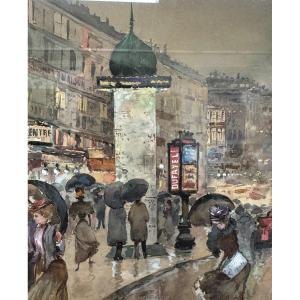


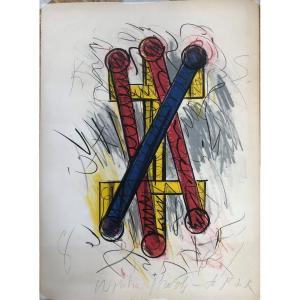


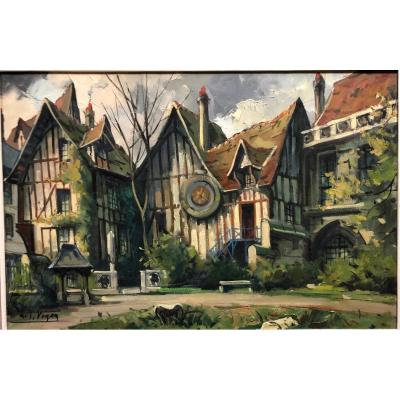
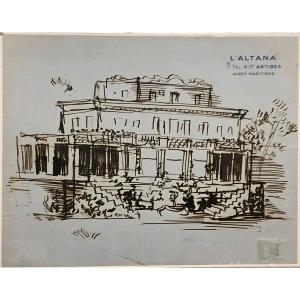





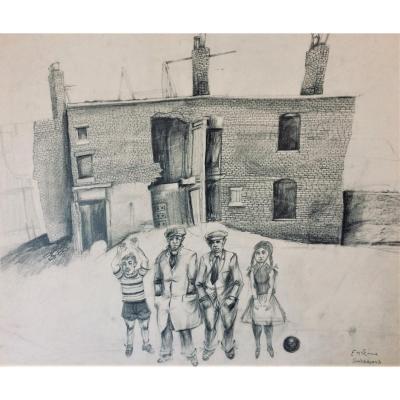
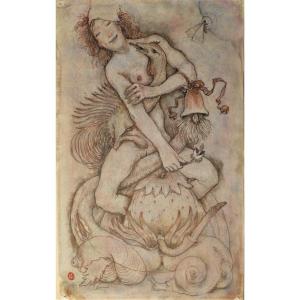
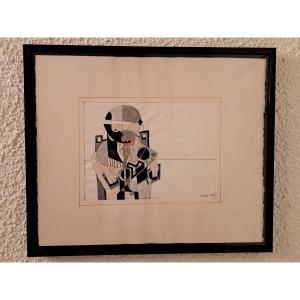





 Le Magazine de PROANTIC
Le Magazine de PROANTIC TRÉSORS Magazine
TRÉSORS Magazine Rivista Artiquariato
Rivista Artiquariato